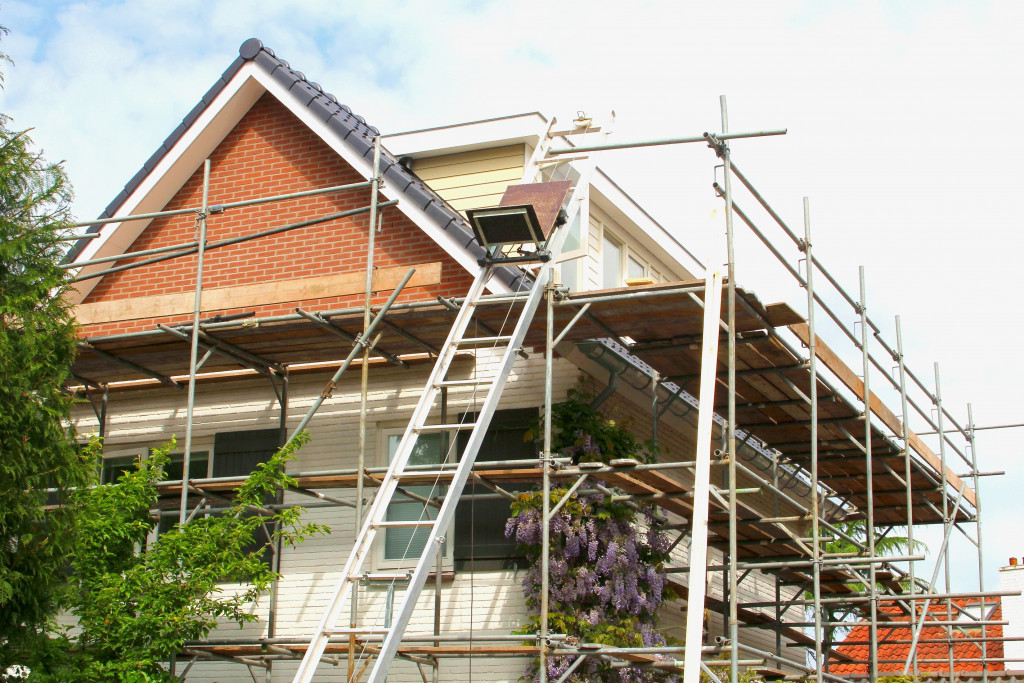- Build a resilient home with stronger materials like impact-resistant glass to protect your family and property from natural calamities.
- Evaluate your roof’s condition for sturdiness, and it is also crucial to seek professional advice if needed.
- Strengthening the foundations and installing drainage systems help prevent flooding and water damage.
- Regularly check electrical and gas systems for faulty wiring, leaks, or outdated systems.
- Prepare a family emergency plan that includes communication channels, evacuation routes, and emergency supplies.
Natural calamities can strike anytime, oftentimes without warning, which can cause significant damage and loss of life. Whether you live in an area prone to natural disasters or not, building a sturdy house is crucial in protecting your family and property.
Calamities can cause significant damage and loss of life, not to mention the financial burden that comes with repairing or rebuilding a home. Building a resilient home is essential in protecting your family and property from these destructive forces of nature.
A resilient home can withstand natural calamities and wear and tear over time. Knowing that your home is designed to withstand any potential threat can give you and your family a sense of security and peace of mind.
Assessing Your Home’s Vulnerabilities
Before building a resilient home, you need to assess your home’s vulnerabilities.
Identifying Weak Points in the Structure
Once you have identified potential vulnerabilities, you must prioritize which areas need reinforcing. Typical weak points include doors and windows, roofs, and foundations.
You can tackle these weak points using more substantial materials such as impact-resistant glass, reinforced steel, and reinforced concrete. By strengthening these areas, you can significantly minimize damages caused by natural disasters.
Evaluating Roof
The roof is one of the most vulnerable areas of a home during natural disasters. You need to evaluate your roof’s condition to determine if it’s sturdy enough to withstand the impact of hurricanes, hail, or heavy winds. It’s crucial to have a robust roofing system that can protect your home and your family from the dangers of natural disasters.
If you’re unsure about your roofing system or need additional safety measures, it’s best to seek the advice of professional roofers. Professional roofers can inform you which safety measures and materials are best for your home. They also have the expertise and skills to install these safety measures correctly.
Foundation Stability
Your home’s foundation is another essential component of a resilient home. The foundation acts as a support for your home and anchors it to the ground.
Ensure that your home’s foundation is stable and reinforced, especially if you live in areas prone to earthquakes and flooding. You can also install a foundation drainage system to help prevent flooding and water damage to your home.
Checking Electrical and Gas Systems
You must ensure your home’s electrical and gas systems are safe during natural disasters. Conduct regular inspections to check for faulty wiring, gas leaks, or outdated systems.
It’s also crucial to have backup systems such as generators and emergency shut-off valves to protect your family during natural disasters.

Strengthening Your Home’s Resilience
To strengthen your home’s resilience, you need to focus on:
- Reinforcing the building structure by adding more support beams, braces, and anchors. You can also use more robust materials such as reinforced concrete or steel.
- Upgrading your windows and doors can help protect you and your family against high winds, flying debris, and water infiltration. Look for impact-resistant glass, sturdy frames, and reliable locking mechanisms.
- Securing your heavy furniture and fixtures by bolting them to the walls or floors and using earthquake straps, braces, or latches.
Building a Family Emergency Plan
In addition to strengthening your home’s resilience, you must prepare your family for emergencies by creating a family emergency plan. This plan should include three main components: communication channels, evacuation routes, and emergency supplies.
First, establish communication channels to help you stay in touch with your family during disasters. This could include phone numbers, emails, social media, or walkie-talkies.
Second, create evacuation routes that can take you and your family to safe locations outside your home, such as a shelter, a friend’s house, or a hotel. Make sure everyone knows the routes and the meeting points.
Third, assemble emergency supplies and kits that can sustain you and your family for at least 72 hours, such as food, water, first aid, medications, and flashlights.

Building a resilient home is essential in protecting your family and property from the dangers of natural disasters. You need to assess your home’s vulnerabilities and identify weak points that need reinforcing.
With proper safety measures and materials, you can significantly minimize damages caused by natural disasters.
It’s also essential to seek the advice of roofers, engineers, or electricians, who can provide you with the necessary information to build a resilient home.

